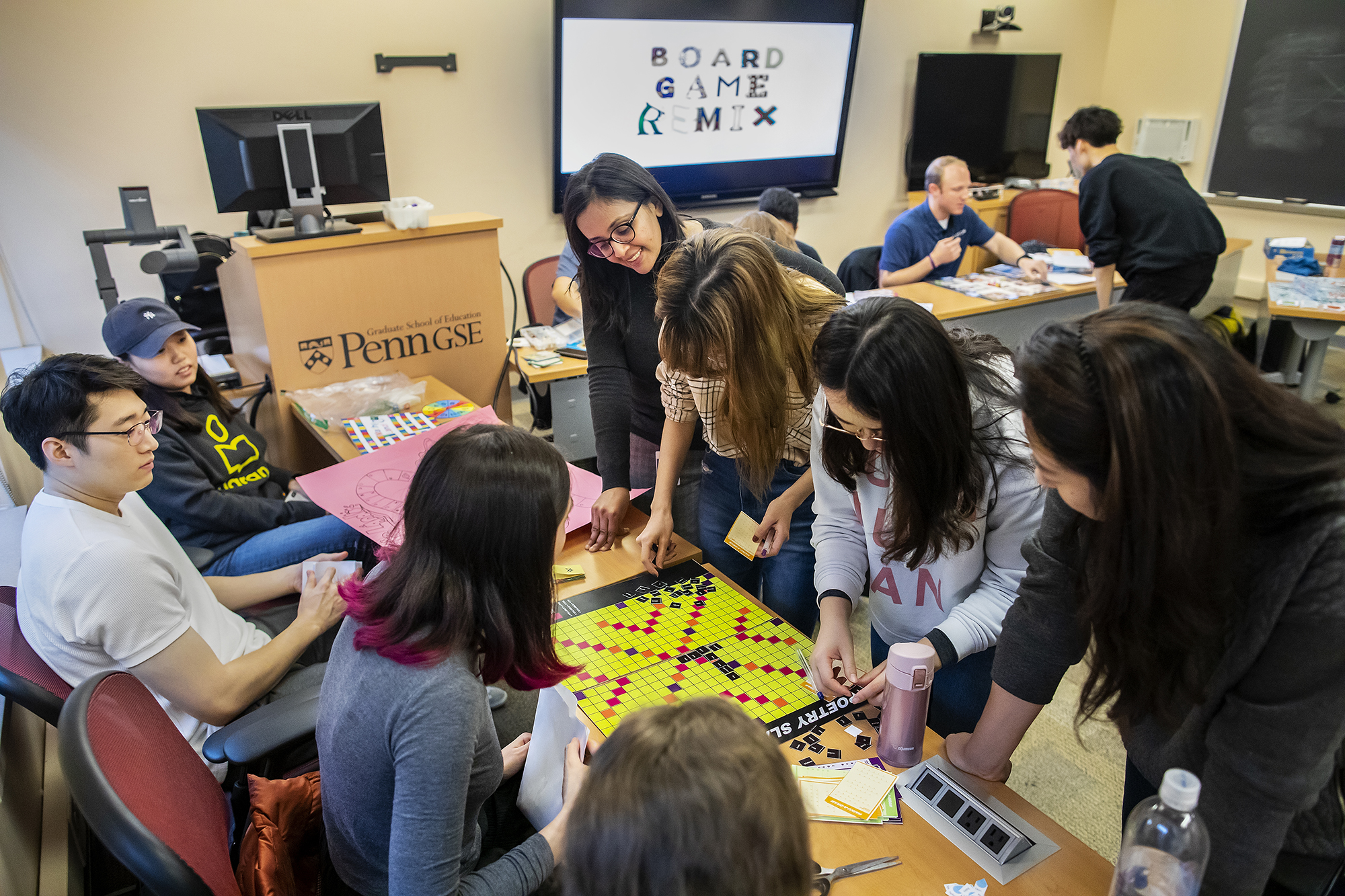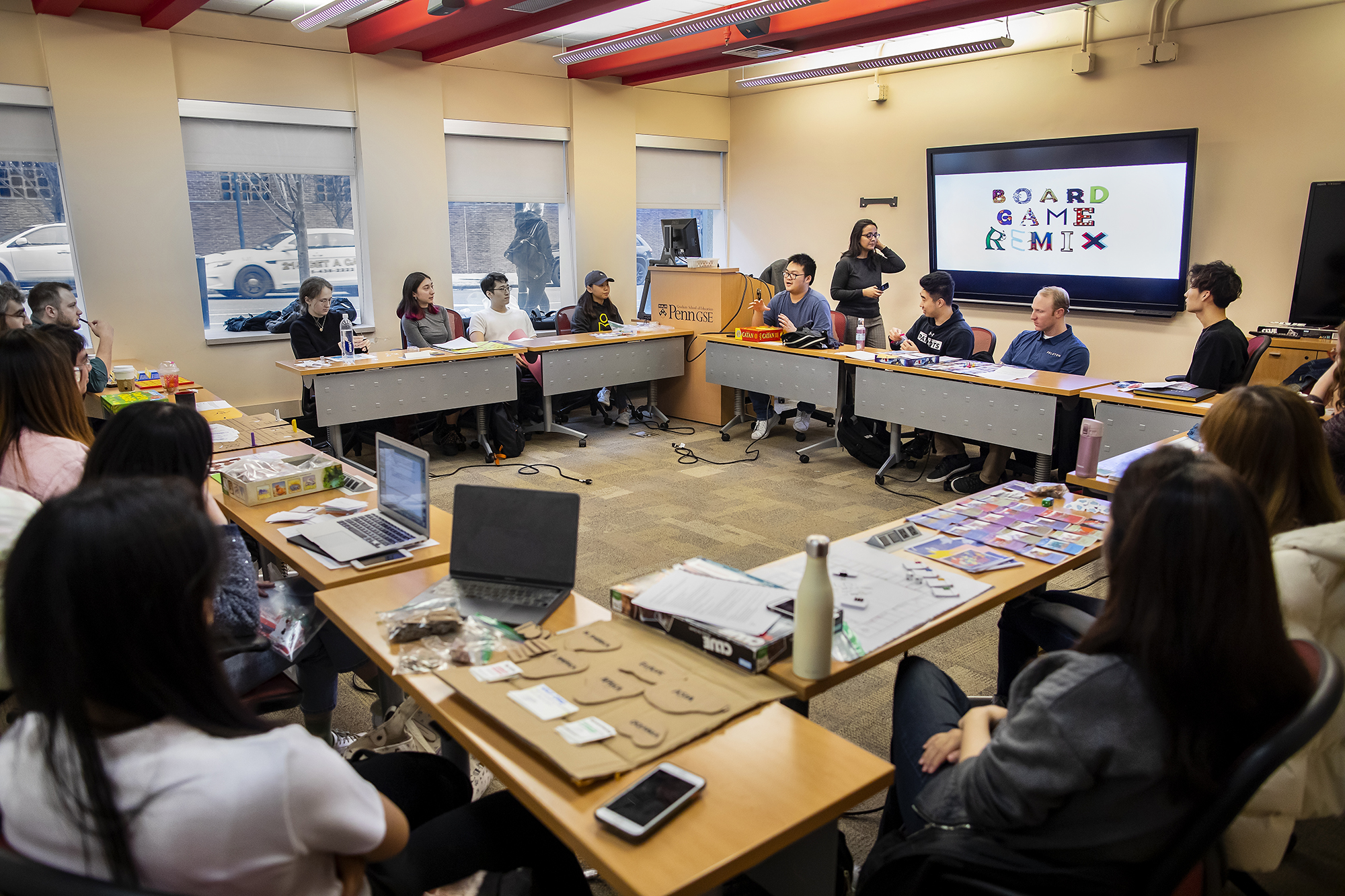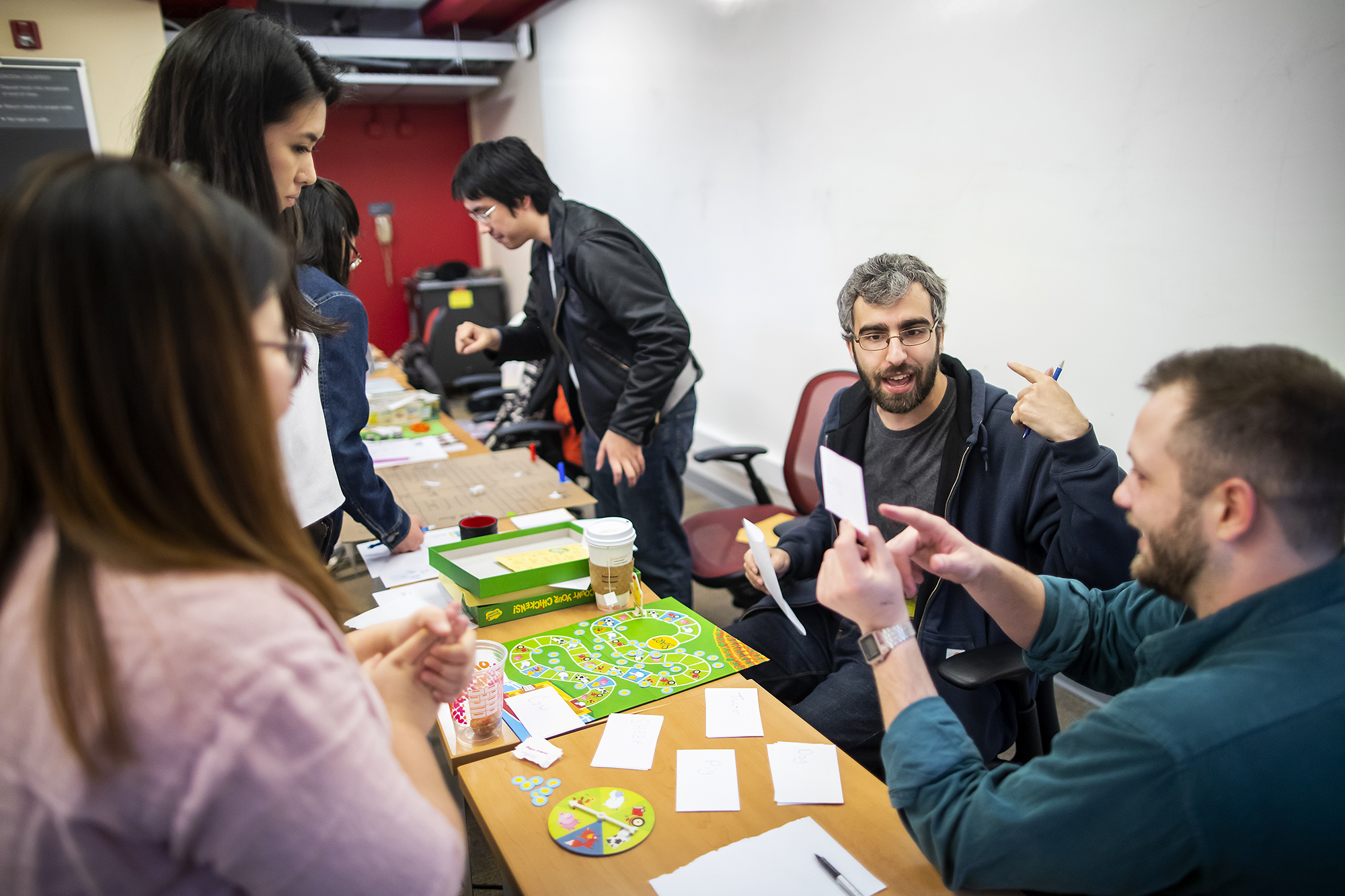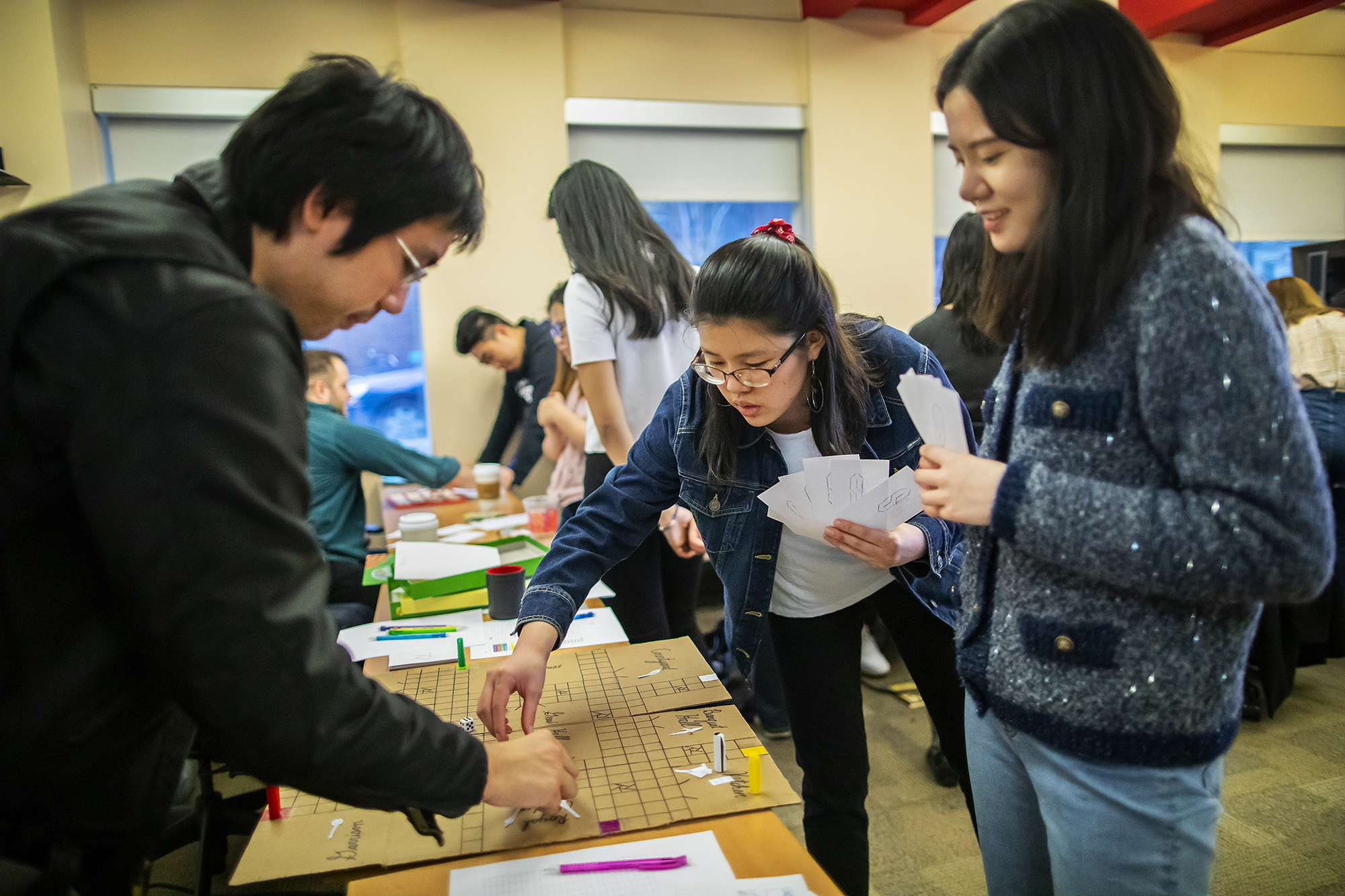
While gaming thrives as a $120 billion industry built around entertainment, its application has charted new and exciting territory in recent years. Militaries use them for training exercises, smartphones apply their principles to track fitness, and, in classrooms, they are wielded as a tool for teaching.
And they’re not entirely a new phenomenon in schools, either.
“Many teachers have always used games,” says Yasmin Kafai, the Lori and Michael Milken President’s Distinguished Professor of teaching, learning, and leadership, who conceived the Video Games and the Virtual World course in the Graduate School of Education in 2008. “It’s nothing new.”
She is also author of the book “Connected Gaming,” published by MIT Press in 2016 that provides the foundation for the course and introduces students to playing and making games for learning.
The course, taught this semester, was created as a way to teach students about the use of video games in education, while also providing context about the history of games and how they are made. Kafai teaches the course once per year but also invites others to teach the course when she does not; this semester, it’s instructed by Mamta Shah, a learning scientist at Elsevier, whose expertise is in game-based learning.
Kafai explains that computer games in the classroom have been employed for decades, even if they still are not yet widespread in K-12 classroom settings for a variety of reasons. Prime among those: modest access to—and investments in—technology, but it’s also true that teachers often don’t have the skills to handle that technology anyway. And, more importantly, aside from games like “Math Blasters” that are more about practice than understanding, it can take hours out of a day for students to get the most out of an immersive computer game experience.
“I think ideally we would think about how the school day could extend so that you could use the time in school to leverage what [you’ve experienced]; you’d have a teacher there and students with peers to have discussions or unpack what a game is about, so you could use out-of-school time to play or do other things,” she says. “Anything requires not just one or two hours; you don’t learn things in forty-five minutes, and most games require time investment in order to understand how to play them.”
These are the sorts of topics explored in the course. One example Kafai cites of how games have been used innovatively in the past is a company she worked with to teach kids about flu epidemic outbreaks. Once per year, concurrent with flu season, a virtual community with millions of kids would be “infected.” No avatars or players die in this scenario, but they would have an opportunity to experience the evolution of an outbreak, protective measures, and more—a connected learning experience.
That experiential education is, of course, more relevant than ever thanks to the presence of COVID-19.
This outside-the-box application of gaming is where the Spring 2020 Graduate School of Education (GSE) course, Video Games and Virtual Worlds as Sites for Learning and Engagement, steps up to explore where the field has been and, moreover, where it’s going as the business and education sectors take an interest in novel applications of games such as e-sports, media literacy, well-being, and mindfulness, to name a few.
“This course is so interdisciplinary in its focus and that’s its strongest appeal, I believe,” says Shah, who teaches the course this semester. “Games have penetrated every aspect of our society—even apart from [K-12] education. Health care education, higher education, training in business, military training, so many of these sectors have adopted games, simulations, or gamification as a means to attain some training or learning goals.”
Per the course’s original intent, Shah teaches about games and learning not just through the lens of playing games, but also through making games. This includes both video games and board games.
“One of the assignments is to remix existing games,” Shah says. “That is a powerful activity to engage in. Creative repurposing of tools happen all the time to meet the needs of users in specific contexts. In this case, the intent was to help students understand a game and then to engage them to think of ways to modify one or more mechanic so that the game could find an enhanced purpose, a new audience, a new level of complexity, or a new learning outcome. This design experience offers many insights to students from the perspective of playing the original game and making a remixed game.”
It also, she says, helps to “humanize the process of learning and engagement that games offer to players.”
One graduate student in GSE, Chakree Matayanant, for that particular assignment (completed before the stay-at-home order), redesigned the popular board game “Clue.” As a twist, he gave it a medieval fantasy setting and changed the rules so that the murderer could change at any given time.
“The mission behind making these board games was to orient a game toward an educational purpose, and these are different ways students took their directions,” he says. “Some tried to remix games to be more about mathematics or science. I decided to go in a direction where I’m emphasizing more of the skills being learned. For Clue, the principle behind that originally is that it enacts on the idea of deduction. But I want to remix it in such a way it also enacts on skills of deductive reasoning and adaptation when the idea of chance is increased.”
As a student of intercultural communications, he says he can imagine a professional scenario where he might be tasked with, as an example, refining a Kickstarter pitch for a video game to relate it cross-culturally. He came into the course casually interested in the video game industry but finds himself increasingly curious about it as the course goes on.
Claire Zau is a graduate student studying learning sciences and technology with an interest in ed-tech investing and a professional background in investing. She took the course because she’s always been interested in the gaming industry but wanted to understand the space better. For her board game, she took inspiration from board games like “Rift” and “Pandemic” to build out a board game that focused on climate change and cultivated a sense of collaboration and competition. The idea was to demonstrate the concepts of conflicts of interest among stakeholders when dealing with climate policies, she says.
“In my venture capital and investing experience, I’ve always been interested in the gaming industry, but never looked at it from a product point of view,” she says. “This has been super cool to not only understand the development process of building a game and what drives user attention, but what drives actual learning. This will be super helpful because I think gaming is relevant in the ed-tech space and … education and gaming are two big interests of mine from an investing perspective.”
Since the University switched to online classes as a result of the COVID-19 pandemic, Shah says she adjusted some of the course activities to reflect the nature of the time we’re experiencing, relaxing emphasis on empirical research and helping students understand gaming’s impact in real time (e.g. recreating university campuses and commencement ceremonies). The class has discussed subjects like connected gaming via virtual worlds like “Minecraft,” as well as social-emotional implications in life-simulation games like Nintendo’s “Animal Crossing: New Horizons.” She points to how that game has taken off as a substitute for activities people would normally be engaging in, like socializing with friends and attending a wedding.
“I feel like the time we are living in has truly unleashed the potential of play in general,” says Shah “Specifically though, I think this time will inspire a new round of interest in games among educators and the wider society. For my class, I have used this novel period to help my students understand how games can be used to connect with others and self, and to explore social and civic issues. I hope people will learn from this time and advocate for the role(s) of playful environments in education and beyond.”










